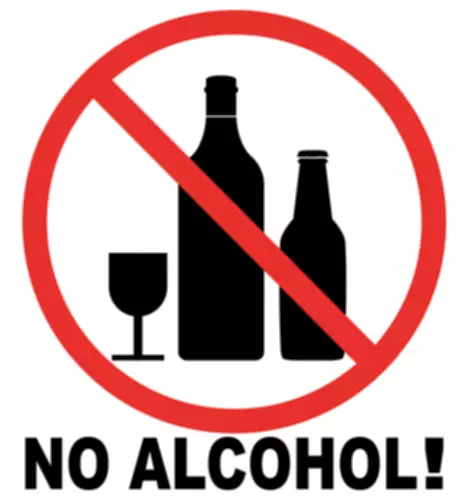
Alcoholism often causes noticeable changes in alcoholism symptoms an individual’s mood and personality. They may become irritable, aggressive, or anxious, even in situations where such behavior is unwarranted. Unexplained mood swings, sudden outbursts of anger, or emotional instability can all point to a problem with alcohol.
- If minor trauma causes bruises and bleeding under the skin, more serious injuries from accidents or falls can cause more bleeding than expected.
- Since you may not have any symptoms in the early stages of the disease, cirrhosis is often detected through routine blood tests or checkups.
- Early damage to the liver causes fat to deposit onto the liver, resulting in hepatic steatosis, or alcoholic fatty liver disease.
- Chronic heavy drinking can cause alcoholic hepatitis, which is the inflammation of your liver.
- There’s no exact timeframe for how quickly alcohol-related neuropathy develops.
Start building healthier drinking habits today.
- And even in the most severe cases, liver transplants and new treatments provide those suffering from cirrhosis with hope.
- Examples of drinking in dangerous situations include driving while under the influence or drinking before operating some form of heavy machinery.
- Often, bruising after drinking is a result of falling or bumping into something.
- Alcohol use may also contribute to complications that affect multiple bodily systems, such as certain cancers, fetal alcohol spectrum disorders, and chronic pain.
Individuals struggling with alcoholism may experience frequent injuries due to impaired motor skills and impaired decision-making abilities while under the influence. Additionally, diminished physical performance, such as a decline in strength, endurance, and overall fitness, can also be attributed to the negative impact of alcohol on the body. Occasional drinking of fewer than two glasses per day is acceptable, but it’s best to familiarize yourself with signs of alcohol addiction and to prevent developing an alcohol use disorder. Genetic, psychological, social and environmental factors can impact how drinking alcohol affects your body and behavior. Theories suggest that for certain people drinking has a different and stronger impact that can lead to alcohol use disorder. If you feel that you sometimes drink too much alcohol, or your drinking is causing problems, or if your family is concerned about your drinking, talk with your health care provider.
Alcohol-related liver disease

In people with liver failure, the liver completely ceases to function. This can be an outcome of advanced-stage liver disease and often means that a liver transplant is the only option for prolonged survival. A liver transplant is a complicated procedure that depends on a donor’s availability.
Impact on your safety

When the body can compensate and manage cirrhosis, the typical lifespan is 6–12 years. Those with less severe diseases will survive longer if they abstain from alcohol. The life expectancy of a person with alcoholic liver disease reduces dramatically as the condition progresses. Doctors may also recommend weight loss and quitting smoking as excess weight and smoking have both demonstrated a role in worsening alcoholic liver disease. Having hepatitis C increases the risk, and a person who consumes alcohol regularly and has had any type of hepatitis faces a higher chance of developing liver disease. There are normally no symptoms, and alcoholic fatty liver disease is often reversible if the individual abstains from alcohol from this point onward.

Liver Health During Treatment
Drinking a lot on a single occasion slows your body’s ability to ward off infections–even up to 24 hours after getting drunk. Blacking out from drinking too much is a warning sign of this stage, along with lying about drinking, drinking excessively, and thinking obsessively about drinking. Alcoholism was identified in 1956 as an illness by the American Medical Association (AMA). It’s a disease—an altering of the brain that controls a person’s motivation and ability to make healthy choices. Once it takes hold, it can be hard to shake loose—without the right help. Mindful drinking offers that middle ground where you’ll proactively improve your drinking habits without any pressure to quit.
General Health
- The part of the brain that controls co-ordination and balance, the cerebellum, can deteriorate under the influence of alcohol, making you look unsteady on your feet.
- Corticosteroids or pentoxifylline may help reduce inflammation in people with acute alcoholic hepatitis while receiving hospital treatment.
- While many things could lead to you developing jaundice, a common cause is high levels of alcohol consumption.
- When someone develops an alcohol use disorder, they will show signs or symptoms that are characteristic of this condition.
- However, even a mild disorder can escalate and lead to serious problems, so early treatment is important.
Alcohol-related neuropathy can go away if you stop consuming alcohol and follow your treatment plan. bruising and alcoholism However, severe alcohol-related neuropathy may cause permanent nerve damage. The sooner you stop drinking alcohol, the more favorable your outlook is if you have alcohol-related neuropathy. Research suggests you can recover from some or all of the nerve damage caused by alcohol-related neuropathy. Alcohol use may also contribute to complications that affect multiple bodily systems, such as certain cancers, fetal alcohol spectrum disorders, and chronic pain. The health risks of alcohol tend to be dose-dependent, and the likelihood of certain harms, such as cancer, begin at relatively low amounts.6 Even drinking within the U.S.

Your healthcare provider may also test you for individual nutrient deficiencies. Many people with alcoholic liver disease are deficient in B vitamins, zinc and vitamin D and it may become necessary to take supplements. However, in advanced alcoholic liver disease, liver regeneration is impaired, resulting in permanent damage to the liver.
Alcohol-related neuropathy is characterized by damage to the peripheral nerves, which transmit signals between the body, spinal cord, and brain. Alcoholism, now called alcohol use disorder (AUD), is a condition in which you have difficulty stopping or managing your alcohol intake despite experiencing negative consequences. Alcohol can cause abnormalities in the blood cells in several ways, including nutritional deficiency, marrow toxicity, and liver disease. The rising rates of severe morbidity and mortality from ALD underscore a pressing need to screen patients for heavy drinking, assess for AUD, and recommend evidence-based AUD treatment. (See Core articles on screening and assessment and treatment. For practice guidance on diagnosing and treating ALD, see Resources below).
Conditions That May Mimic Alcoholic Neuropathy
Prolonged alcohol abuse can lead to inflammation and scarring of the liver, ultimately resulting in conditions such as alcoholic hepatitis, fibrosis, and cirrhosis. These conditions can have severe consequences, including liver failure and an increased risk of liver cancer. Although the damage caused by cirrhosis is not reversible, treatment can slow the progression of the disease, alleviate symptoms, and prevent complications.

Heavy drinking can lead to easy bruising and bleeding, and not just because you’re more prone to falling and hitting table corners when drunk. Meanwhile, binge drinking focuses more on how quickly and how much you drink in one sitting. The CDC defines binge drinking as drinking that brings your blood alcohol concentration (BAC) to 0.08% or more.